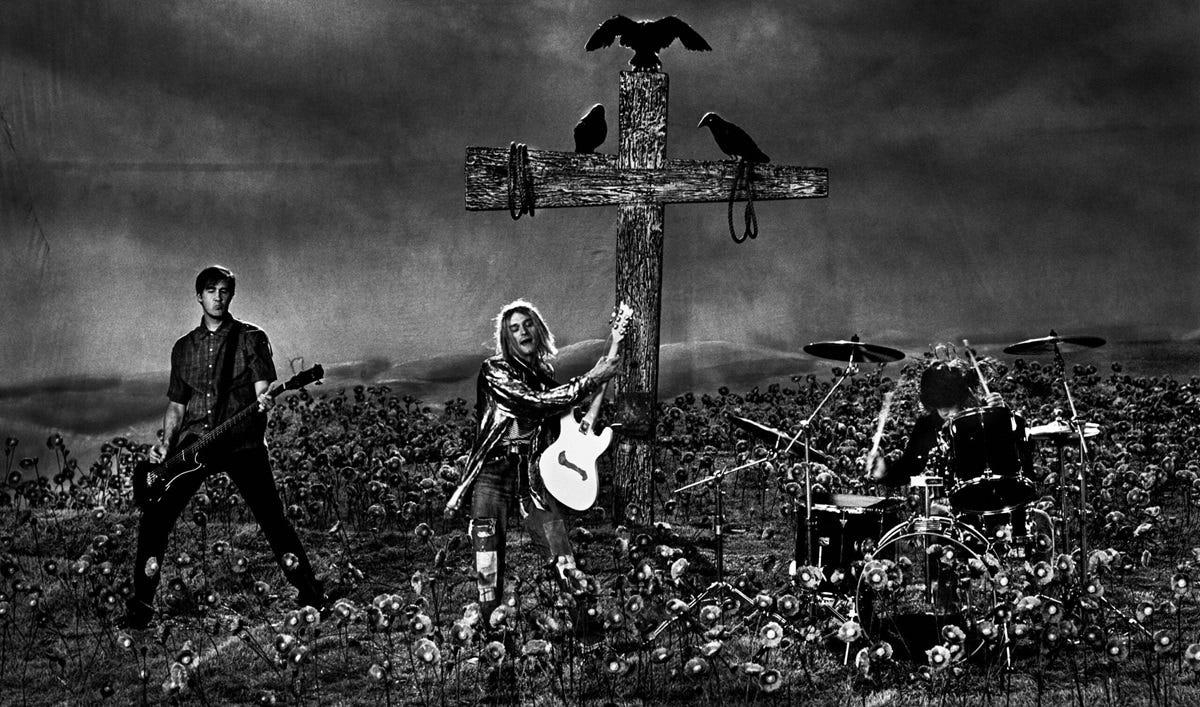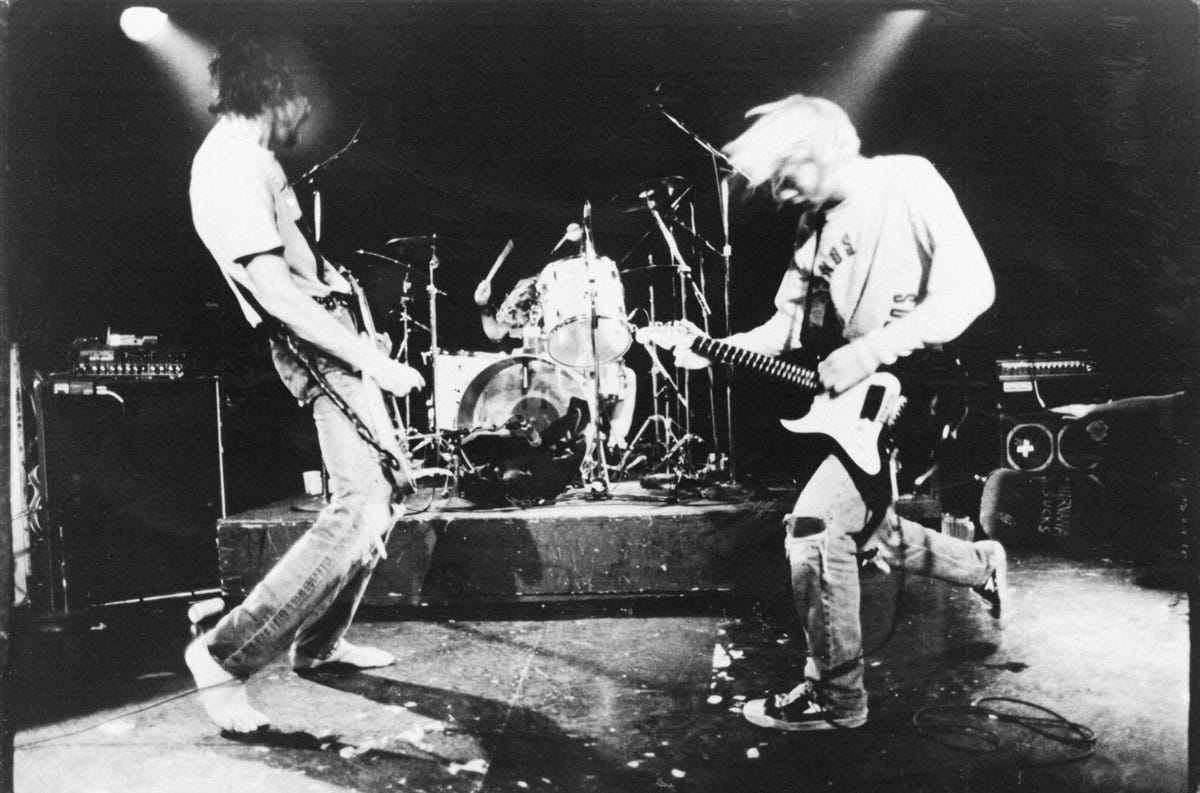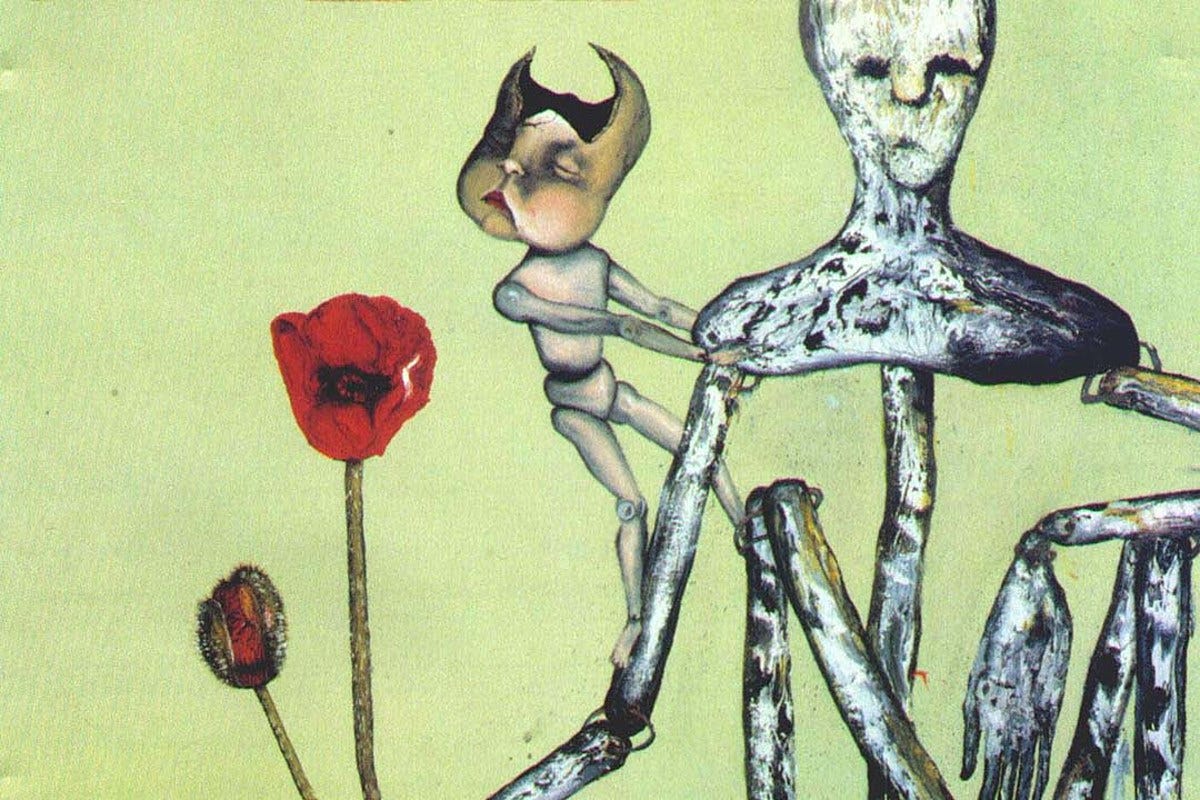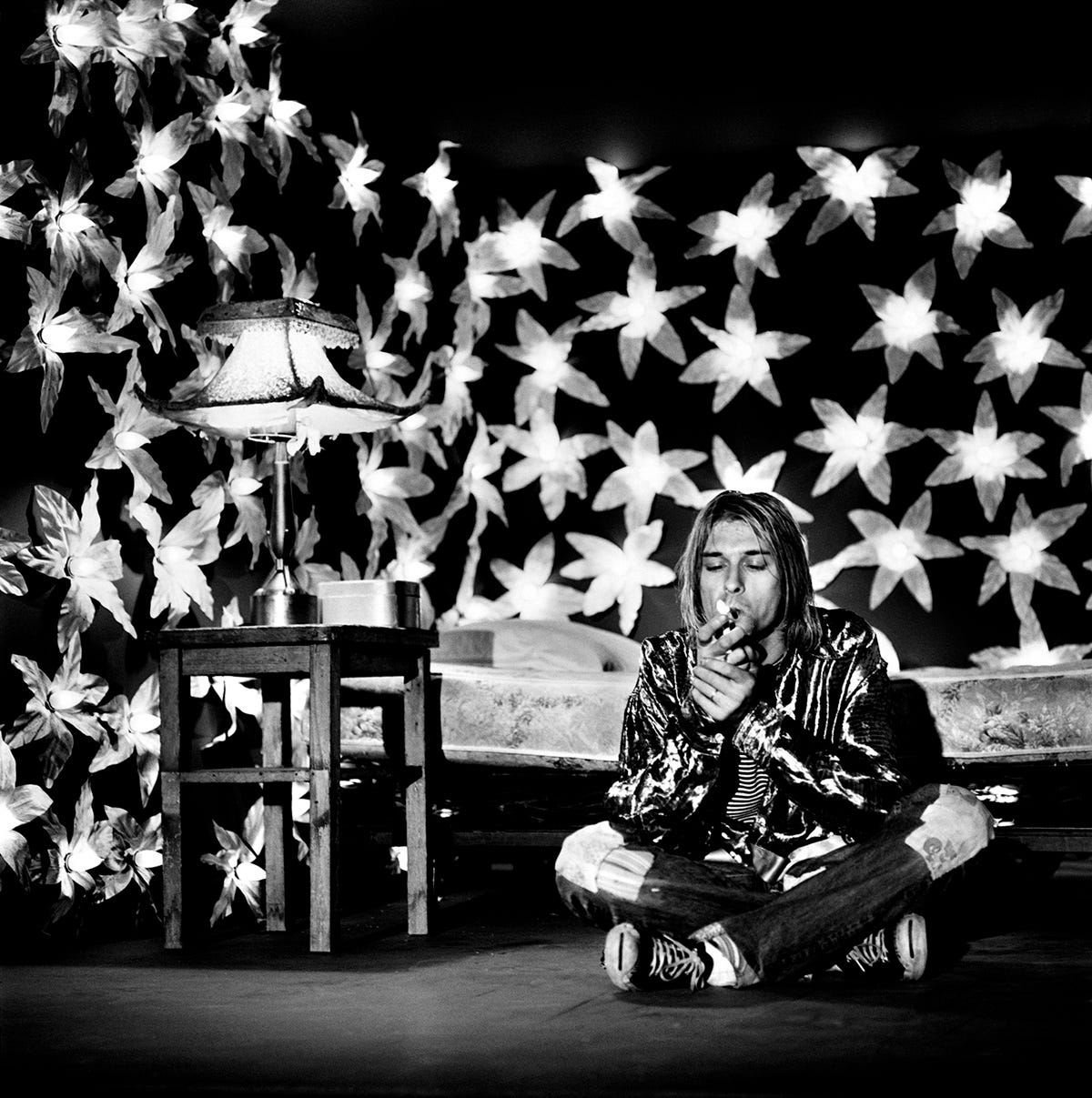GIRL MUSIC 001: IN UTERO | NIRVANA
"Meat eating orchids forgive no one just yet. Cut myself on angel hair and baby's breath."
GIRL MUSIC is an independent music newsletter for anyone that loves pretty art and music.
» Consider buying me breakfast or coffee on Ko-Fi/PayPal, or leaving me a small tip on Venmo.
« Contact me at juno.stump@gmail.com if you need someone with experience in mock reviews, copy editing/writing, PR work, etc »
Words: Juno Rylee Schultz (she/her)
Edits: Morgan Shaver (they/them), Nathan Miller (he/him), and Bex Stump (she/her)
Sources: Come As You Are: The Story of Nirvana by Michael Azerrad, Heavier Than Heaven: A Biography of Kurt Cobain by Charles R. Cross, and Journals by Kurt Cobain
"The grown-ups don't like it. I can't help myself—I'm just putting out a record I would like to listen to at home. Of course, they want another Nevermind, but I'd rather die than do that. This is exactly the kind of record I would buy as a fan.”
Cobain speaking with Nirvana biographer Michael Azerrad
IN UTERO isn’t just the final studio album released by girly-pop, rock band Nirvana; IN UTERO is also the authentic album that Kurt Cobain chose to create while the group was number one, in an attempt to chase away the band’s mainstream success, while simultaneously doubling down on the trio’s punk rock roots.
Nirvana’s second studio album, NEVERMIND, was produced with little interference from DGC Records—despite being the band’s first release on the label—but Kurt Cobain was determined for IN UTERO to be created on his terms from the beginning.
Nirvana didn’t play as many shows in 1992, with the band citing exhaustion, but the year started with Nirvana’s debut Saturday Night Live performance, as well as NEVERMIND taking the Billboard number one spot from Michael Jackson’s DANGEROUS.
The summer brought a crisp performance of ‘Lithium’ at the MTV Video Music Awards (after teasing a false intro of ‘Rape Me,’ the song MTV wouldn’t let Nirvana play), with Nirvana receiving awards for ‘Best New Artist in a Video’ and ‘Best Alternative Video’ for ‘Smells Like Teen Spirit.’
Nirvana ended the year with an incredible set-list at the Reading Festival—containing songs from every album released so far, and even the yet-to-be released IN UTERO—instantly dissipating the breakup rumors and health problems swirling around the band and Kurt at the time.
DGC Records was hoping for a studio follow-up album to NEVERMIND for the 1992 holiday season, but instead they were able to release INCESTICIDE: a compilation album of unreleased recordings leftover from Sub Pop, Nirvana’s first record label.
Kurt agreed to the compilation’s release on the condition that he would be allowed complete control over the album's artwork and liner notes.
Once NIRVANA became more successful, KURT wanted to use his fame more to advocate his feminist beliefs. The band had done a pro-choice around NEVERMIND. It was called Rock for Choice. He did a long interview for THE ADVOCATE (a gay and lesbian publication), he wrote those liner notes [referring to the liner notes from INCESTICIDE, listed below]. He really made it clear that he was subverting the macho archetype of rock and roll, and replacing it with someone with values that respected women, gays, and that respected sensitivity. And at the same time, he could rock better than anyone else [laughs].
- Danny Goldberg, Kurt Cobain’s former manager, speaking about Kurt Cobain in a 2019 interview.
Kurt gave only one interview for the promotion and release of INCESTICIDE, and it was for The Advocate, a gay and lesbian news publication. Kurt’s support for queer rights and feminism is made clear in the piece, even saying he was “gay in spirit.”
“At this point I have a request for our fans. If any of you in any way hate homosexuals, people of different color, or women, please do this one favor for us -- leave us the fuck alone! Don't come to our shows and don't buy our records. Love, kurdt (the blonde one)
- from the liner notes of INCESTICIDE
After Kurt Cobain’s interview with The Advocate, he met with the rest of the band and Steve Albini to bang out an album without distractions (read: Kurt’s dealers, or curious record executives).
1991’s NEVERMIND completely changed music but Nirvana was determined to prove they were still the same when they entered the studio to put together IN UTERO—even if their last album had already been certified quadruple platinum, with over four million units sold.
In a letter Steve Albini faxed to Nirvana before the work at Pachyderm Studio started, Albini detailed his conditions for agreeing to record IN UTERO for Nirvana; among them was requesting the band members pay him directly out of their pockets, as well as for the studio time itself.
“I think the very best thing you could do at this point is exactly what you are talking about doing: bang a record out in a couple of days, with high quality but minimal “production” and no interference from the front office bulletheads.
I like to leave room for accidents and chaos. Making a seamless record, where every note and syllable is in place and every bass drum beat is identical. I prefer to work on records that aspire to greater things, like originality, personality and enthusiasm. If every element of the music is controlled by click tracks and computers … [then the record] certainly won’t be exceptional. It will also bear very little relationship to the live band, which is what the hooey is supposed to be about.
My first choice for an outside recording studio would be a place called Pachyderm in Cannon Falls, Minnesota. It’s a great facility with outstanding acoustics and a totally comfy architect’s wet dream mansion where the band lives during the recordings. This makes everything more efficient. Since everybody is there, things get done and decisions get made a lot faster than if people are out in a city someplace. There’s also all the posh shit like a sauna and swimming pool and fireplaces … 50 acres and like that. It’s also quite inexpensive, considering how great a facility it is.
I explained this to Kurt but I thought I’d better reiterate it here. I do not want and will not take a royalty on any record I record. No points. Period. I think paying a royalty to a producer or engineer is ethically indefensible. The band writes the songs. The band plays the music. Royalties belong to the band.
I would like to be paid like a plumber: I do the job and you pay me what it’s worth. The record company will expect me to ask for a point or a point and a half. If we assume three million sales, that works out to 400,000 dollars or so. There’s no fucking way I would ever take that much money. I wouldn’t be able to sleep.
I have to be comfortable with the amount of money you pay me, but it’s your money, and I insist that you be comfortable with it as well.
Whatever. I trust you guys to be fair to me and I know you must be familiar with what a regular industry goon would want. I will let you make the final decision and what I am paid will not affect my enthusiasm for the record.
Please call me to go over any of this if it’s unclear.
From Steve Albini’s letter to Nirvana
Kurt paid Albini $100,000 and the band paid $24,000 for their time spent at Pachyderm.
It took three days for the band’s equipment to arrive by mail, but all of the tracks for IN UTERO were recorded and finished within six days.
The band and Albini typically started work midday, pausing only for lunch and dinner, playing well past midnight.
Albini surrounded Dave Grohl’s drum kit with thirty microphones so the fullest sound could be captured. For ‘Very Ape’ and other more aggressive-drumming songs, Albini recorded Grohl’s drumming in the facility’s kitchen, for the natural reverb that it offered.
Cobain’s vocal takes were completed in just six hours, all while strumming along with an acoustic guitar and sitting in an office desk chair across from Albini.
Albini said Cobain and the band were focused and sober while in the studio. However the band did still find time for prank phone calls and setting each other on fire.
The time after the studio sessions was tumultuous; the band was thrilled with how the final mixes with Albini sounded but Nirvana’s record label could not have been more displeased.
Kurt did eventually allow for ‘Heart-Shaped Box’ and ‘All Apologies to be remixed by Scott Litt, who was known for his work with R.E.M.
‘Heart-Shaped Box’ was released as a single and music video in August 1993, three weeks before the release of IN UTERO on September 21.
IN UTERO contained more of Nirvana’s classic blend of girly pop and punk rock, but critics and fans were all quick to observe the themes of suicide, death, and body horror packed into the album’s lyrics. Kurt would however continue his trend of distancing himself from his lyrics, claiming it was all just meaningless, random poetry from his journals.
The album's front cover artwork includes a photo of a pregnant anatomical angel. The back cover contains a collage containing flowers, plastic fetuses, turtle shells, body parts, orchids, and lilies, designed and put together by Kurt Cobain on his living room floor.
IN UTERO debuted at number one in the US and the UK, despite some chain stores, such as Wal-Mart and K-Mart, initially refusing to carry the album, due to the album’s artwork and inclusion of tracks such as ‘Rape Me.’
"Despite the fears of some alternative-music fans, Nirvana hasn't gone mainstream, though this potent new album may once again force the mainstream to go Nirvana."
TIME Magazine reviewer Christopher John Farley
“IN UTERO is a lot of things–brilliant, corrosive, enraged and thoughtful, often all at once. But more than anything, it's a triumph of the will.”
Rolling Stone reviewer David Fricke
MTV performed interviews on a college campus after IN UTERO was released, sharing some of the feedback with the band.
In the years since it’s become increasingly clear on the impact IN UTERO had on the music industry, culture, and art, especially in the years since Kurt Cobain’s tragic death on April 5th, 1994.
IN UTERO has been certified five times platinum and has gone on to influence countless artists and bands in the years since.
“In Utero was a far better record than Nevermind and one that only ten years later seems to be an influential seed spreader, judging by current bands. If it is possible for an album that sold four million copies to be overlooked, or underappreciated, then In Utero is that lost pearl.”
Cobain biographer Charles R. Cross discussing the legacy of IN UTERO in 2004
My four favorite tracks from IN UTERO are:
notable interviews from the IN UTERO period:
(April 5, 1993) Nirvana speaking with MTV about the Cow Palace benefit show the band was playing for Bosnian Rape Victims
(April 1993) Much: Our Last Time w/ Kurt Cobain
(December 10, 1993) Nirvana speaking with MTV’s Kurt Loder
notable performances from the IN UTERO period:
(April 5, 1993) Nirvana’s Cow Palace benefit show
(August 6, 1993) Nirvana performing at Mia Zapata benefit show
(December 1993) Nirvana’s MTV LIVE & LOUD rehearsal
(December 1993) Nirvana’s MTV LIVE & LOUD performance
Image credits:
1. An image from the 'Heart Shaped Box' music video, director Anton Corbijn
2. Nirvana performing live in 1991, photographer Charles Peterson
3. Three stills from the 'Heart Shaped Box' music video (director Anton Corbijn) that were collected and stacked vertically by an online creator. It appears to have been tumblr user "g0thicplague" but I can't confirm for sure.
4. Incesticide album artwork, artist Kurt Cobain
5. Photograph of Pachyderm Studio, photographer unknown
6. Nirvana outside Pachyderm Studio during the recording of 'In Utero', photographer Anton Corbijin
7. Kurt Cobain smoking a cigarette in the bedroom set of the 'Heart Shaped Box' music video, photographer Anton Corbijin
8. Photograph of a collage featuring human anatomical body parts, flowers, etc that was created by Kurt Cobain on the floor of his house for In Utero's back album artwork. It was photographed by Charles Peterson.
Consider subscribing so you don’t miss any GIRL MUSIC












Thank you for the excellent article. My top tracks: 'Radio Friendly Unit Shifter', 'Very Ape', 'Milk It'. I was fortunate to be at the Seattle Pier MTV show for In Utero, crowd surfing feet from the band. Unforgettable. // Peace, love & kindness to you.
This rules, thank you for giving me a distraction today. I'm going to listen to In Utero now.